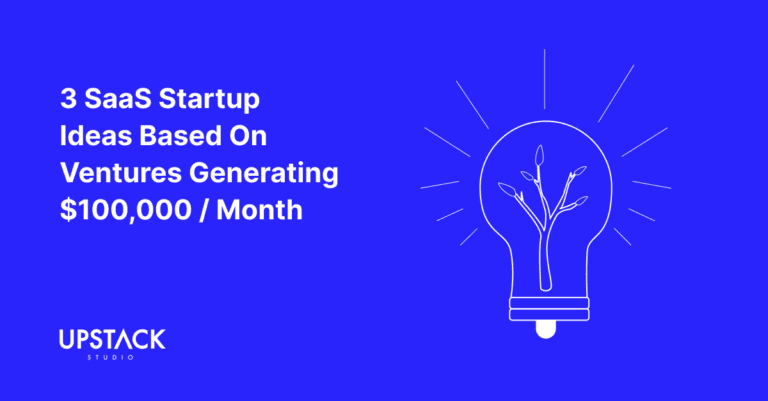Globally, the mobile app development industry is expected to grow to over $360 billion by 2030.
Unsurprisingly, this increase in market size is the product of a growing consumer base and changing appetites within the mobile app landscape.

App founders would be wise to know what is currently popular and what will, within the next 12 months.
And so, we’ve done some serious homework over the past few weeks to bring you the Top 11 Upcoming Trends in Mobile App Development for 2024, complete with sources.
Let’s begin.
Trend 1: No Code App Development
Source: Global No-code Platforms Market Predicted to Reach USD68.03 billion by 2030
No code app development refers to the creation of web and mobile applications without the need for traditional programming languages.
This trend is gaining momentum as it empowers individuals without coding expertise to develop functional and visually appealing apps using intuitive drag-and-drop interfaces.
In 2024, we anticipate a surge in the adoption of no code development platforms, democratizing app development and fostering innovation across various industries.
Trend 2: Low Code App Development
Source: Gartner Forecasts Low-Code Market to Grow to $31.9 billion in 2024
Low code app development requires minimal coding to build sophisticated mobile applications, combining visual development tools with reusable components and backend services.
Collectively, this streamlines the app development process while providing flexibility for customization several leagues above what even the most robust no code app builders offer.
In 2024, founders can partner with developers to focus on business logic and user experience, while the platform handles infrastructure and integration complexities.
Trend 3: Augmented & Virtual Reality Apps
Source: Consumer spending projected to reach $17.6 billion by 2024
Augmented Reality (AR) and Virtual Reality (VR) technologies utilize advancements in hardware and software to deliver unique and immersive experiences.
AR enhances the real-world environment by overlaying digital information directly onto it, offering interactive and realistic simulations accessible via mobile devices or AR glasses. Conversely, VR creates a completely digital environment, providing an escape from reality and immersive spatial computing experiences through the use of VR headsets.
Both technologies transform the way users interact with digital content on their mobile devices, each offering a distinct approach to blending the digital and physical worlds.

We anticipate they will continue to push the boundaries of immersive experiences and digital storytelling in 2024 across entertainment, gaming, education, and enterprise sectors such as real estate.
Trend 4: Predictive Analytics
Source: Predictive Analytics in Healthcare Projected to Grow to $8.46 billion by 2025
Predictive analytics in mobile apps involves leveraging data analysis and machine learning algorithms to anticipate user behavior, preferences, and needs.
By analyzing historical data and real-time interactions, mobile apps can personalize content, recommend products, and optimize user experiences.
In 2024, predictive analytics will continue to drive app engagement and retention by delivering tailored experiences that resonate with individual users across various domains, including e-commerce, healthcare, and entertainment.
Trend 5: Integration of IoT & Lifestyle Apps
Source: Global 5G market size projected to reach USD 285.28 billion by 2030
The Internet of Things, or IoT, is essentially about connecting devices over the internet, allowing them to talk to us, to applications, and to each other. In the simplest terms, it’s like giving a voice to everyday objects and devices, enabling them to collect and exchange data without requiring human-to-human or human-to-computer interaction.
For instance, with IoT:
– Your refrigerator can notify you when you’re running low on groceries.
– A fitness band can monitor your daily activities and suggest healthier lifestyle choices.
– Smart thermostats can learn your preferences and adjust the temperature in your home automatically for both comfort and energy efficiency.
– Security systems can provide real-time alerts and visuals of your home directly to your smartphone, no matter where you are.
IoT lifestyle apps integrate with smart devices and sensors to enhance users’ daily lives by providing convenience, automation, and insights.
in 2024, we anticipate a proliferation of IoT lifestyle apps for multiple lifestyle use cases such as:
- smart homes,
- healthcare and wellness,
- automotive, and
- wearable technology sectors
And just to brag a little, check out our work with Daikin & Acson Malaysia that turned users’ phones into smart controllers for home appliances.
Trend 6: Apps for Foldable Devices
Source: Apple’s market share dips due to growing popularity of foldable phones
With the growing popularity of foldable smartphones and tablets, developers are tasked with optimizing app experiences for unique form factors and multi-screen configurations.
In 2024, we expect to see a surge in the development of apps tailored for foldable devices, offering seamless transitions between different modes and maximizing screen real estate.
These apps will leverage innovative design principles and multi-tasking capabilities to deliver immersive and intuitive user experiences, unlocking new possibilities for productivity, gaming, and content consumption on foldable devices.
Trend 7: Apps for Smart Watches
Source: Smartwatch sales in India hit new highs with 50% growth rate in 2023
Smart watches have evolved beyond basic fitness tracking to become indispensable companions for managing notifications, staying connected, and accessing essential information on the go.
In 2024, app developers will continue to innovate in the wearable technology space by creating feature-rich apps optimized for smart watches.
These apps will leverage the device’s sensors, voice commands, and contextual awareness to deliver glanceable and actionable experiences tailored for the wrist, ranging from productivity tools and messaging apps to health and wellness trackers.
Trend 8: Open AI-Powered Apps (Generative AI)
Source: Venture capital firms invest over $36 billion into Generative AI
Open AI-powered apps harness the capabilities of artificial intelligence and machine learning frameworks to enhance user experiences, automate tasks, and deliver personalized recommendations, especially with Open AI’s more capable GPT-4.
In 2024, we anticipate an expansion of open AI platforms and libraries, enabling developers to integrate intelligent features such as:
- natural language processing
- computer vision
- predictive modeling
- voice assistants
- image recognition, and
- predictive text input
These will further enhance how users interact with their devices and accomplish tasks.
Trend 9: E-Wallets
Source: Global in-vehicle payment services market size expected to reach $14.43 billion by 2030
E-wallets, also known as digital wallets or mobile payment apps, enable users to securely store payment information and conduct transactions using their smartphones.
In 2024, the adoption of e-wallets is expected to accelerate globally, driven by the increasing demand for contactless payments, convenience, and financial inclusion.
E-wallet apps will offer seamless integration with banking services, peer-to-peer transfers, loyalty programs, and mobile commerce platforms, revolutionizing the way people manage their finances and make purchases in-store and online.
Trend 10: 5G Compatibility
Source: 5G to account for > 90% of mobile subscriptions in North America by 2028
The rollout of 5G networks promises to revolutionize mobile connectivity by delivering ultra-fast speeds, low latency, and massive bandwidth.
In 2024, mobile apps will increasingly leverage 5G compatibility to unlock new capabilities and experiences, such as high-definition video streaming, real-time gaming, augmented reality, and IoT connectivity.
Developers must optimize their apps to harness the full potential of 5G networks, delivering seamless performance and responsiveness across diverse use cases and devices.
Trend 11: Progressive Web Apps
Source: Global PWA market projected to reach a value of $10.44 billion by 2027
Progressive web apps (PWAs) combine the features of web and mobile applications to offer fast, reliable, and engaging experiences across different devices and platforms.
In 2024, PWAs will continue to gain traction as a cost-effective alternative to native apps, especially for businesses seeking broader reach and improved discoverability.
These lightweight and installable web apps will leverage service workers, push notifications, and offline capabilities to deliver app-like experiences directly from the browser, blurring the lines between web and native mobile applications.
Embracing the Mobile App Development Trends in 2024
These trends represent the evolving landscape of mobile app development in 2024, driven by advancements in technology, changing user behaviours, and emerging market opportunities.

By embracing these trends, businesses and developers can stay ahead of the curve and deliver innovative solutions that meet the evolving needs and expectations of mobile users.
Matching Trends to Personal Passions and Expertise
While staying abreast of industry trends is essential, avoid blindly jumping on the latest bandwagon.
it’s equally important to align these trends with your areas of expertise and interests.
By focusing on trends that intersect with your domain knowledge and skills, you can leverage your strengths to create software ideas customers actually want.
Hey there stranger, thanks for reading all the way to the end. Consider joining our mailing list for a one-stop resource on everything from micro SaaS validation all the way to execution and promotion. Get a nifty list of questions to ask app developers when you sign up!
App Developer Interview Questions Template
Download this template now so you know exactly what to ask App Development Agencies! Let us know where should we send it through the form below.





